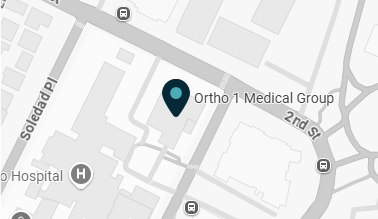“Total joint replacement” can be a scary phrase for some patients. But, if you’re living with chronic pain and struggling to do simple tasks, like putting on your shirt or taking a cup from a cupboard, it may begin to seem less scary and more like a solution.
Patients who come to Ortho 1 Medical Group with shoulder pain have various issues. Some have osteoarthritis, others have been injured, and others have inflammatory diseases like rheumatoid arthritis. In each case, our highly trained providers evaluate and make recommendations—and sometimes, the recommendation is for a total shoulder replacement.
Shoulder basics
Before we discuss when you should consider total shoulder replacement, we should first understand how your shoulder works. Like your hip, the shoulder is a ball-and-socket joint. However, unlike your hip, the “socket” is very shallow, which allows for incredible mobility when everything is healthy and functioning correctly.
Since your shoulder socket is so shallow, the ball at the top of your arm bone (humerus) is held in place with muscles, tendons, and ligaments that collectively make up your rotator cuff. Rotator cuff injuries are very common, and in some cases, they damage the cartilage that should protect the bones of your joint.
Similarly, osteoarthritis can cause the vital cartilage to break down, and the bones can rub against each other, causing pain and damage. Rheumatoid arthritis is an autoimmune condition in which the immune system attacks the lining of the joints, causing damage.
In all of these cases, the end result is damage to the bones of the shoulder joint, which can be helped by total shoulder replacement.
Symptoms that could mean you need a new shoulder
Choosing to replace a natural joint with man-made parts is a big decision. For most people, some or all of the following symptoms are present:
Lack of range of motion
Maybe you can’t raise your hand above your head or stretch your arm in front of your body. Perhaps it hurts to move your arm when you’re walking.
In all of those cases, range of motion is lost. A healthy shoulder joint is the most mobile joint in the human body. It allows you to swing your arm in a big circle, forward and backward, and reach across your body to some degree behind you.
Most people don’t think about range of motion until it’s absent, and daily activities become difficult.
Increased chronic pain
When your bones are damaged, you typically feel pain. In the case of your shoulder, you probably feel pain every time you move.
Before joint replacement, most patients try more conservative treatments, such as over-the-counter pain medications, physical therapy, corticosteroid injections, or arthroscopy, a procedure during which the surgeon “cleans up” any loose cartilage in the joint.
If those approaches don’t alleviate your pain, joint replacement may be your best option. Although shoulder replacement surgery usually has a long recovery period, most people feel less pain very quickly.
Are you ready?
The best way to find out if total shoulder replacement could be a good solution for you is to have a thorough evaluation by a qualified expert with a deep understanding of shoulder and joint health. If you’re living with ongoing pain in your shoulder that limits what you can do, schedule an appointment at the most convenient location of Ortho 1 Medical Group and discuss your options.





















